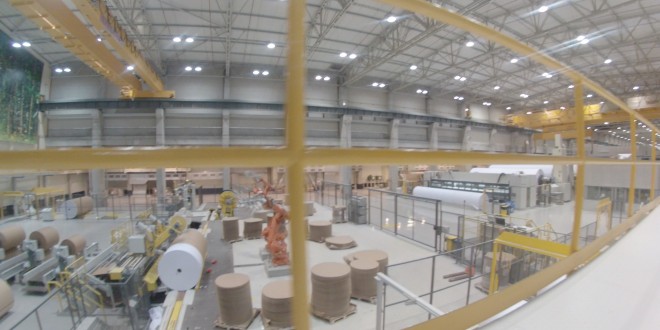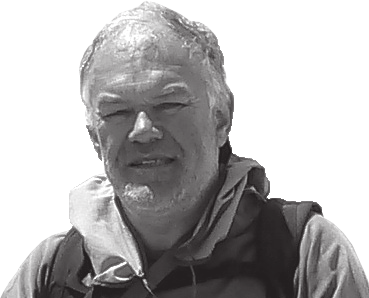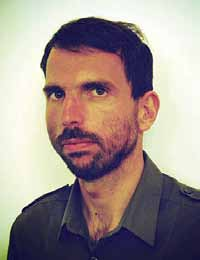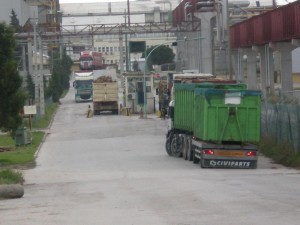
Already on the Alfa Pendular service. With a CO2 emission of but four kilograms, the journalist leaves the Portuguese south behind to speed north at 220 km and recalls his immediate past. A few days ago, he’d taken to his wardrobe in order to dig out his old, best suit to check that it would stand up to the needs of this mission. He needed a suit in tip-top condition and that also fitted him well as he was due to play the role of a wealthy investor. A test but the means by which he hoped to open the door to better opportunities for gathering information. And especially because, as a journalist, any effort to get an interview with the CEO of a listed Portuguese company would involve jumping through all of the obligatory formalities: holding good relations with a dozen or so influential families and pre-submitting all questions in writing – or else face rejection. Good and independent journalists do not have an easy life in Portugal. Too many of their peers still remain in cahoots with those in power and prove just as overly receptive to the presents and freebies as the great majority of politicians in parliaments.
For the last three decades, I have engaged in investigative journalism and written impartially and in full awareness that investigative journalism always strays along the borders of legality. However, without due risk, defeat is all but inevitable. Simultaneously, a second team would also attempt to obtain details through conventional means and dealing with the corporate press office. I had already made a bet with them. I was certain that they would still be waiting with their hands imploring as the publication deadline loomed. I wanted to interview the President of the Semapa SGPS Board of Directors, Pedro Mendonça de Queiroz Pereira. I wanted to find out more about the justifications behind his decision to “eucaliptalise” the length and breadth of Portugal for the purposes of paper production and with the sole objective of making money. Furthermore, ECO123 was seeking to provide a fairly in-depth profile of paper production ongoing at a subsidiary of the Portucel/Soporcel wood and pulp factory in Setubal. Would the corporate press office authorise such a visit?
Owing debts to the future?
Just outside of Setúbal, passengers get a full dose of the stench of rotten eggs emanating from the wood and pulp factory run by the Portucel corporation. This is the destination the journalist seeks to visit in order to ascertain just how the € 300 million raised last year by speculative banks is actually getting invested. In 2012, through Barclays and BPI, Semapa SGPS issued bonds with a unit price of €1.000. Even amidst the economic recession in which Portugal is currently plunged, they gained double the level of funding that they called upon markets to underwrite. Hence, while calling for “only” € 150 million, and paying a fixed interest rate of 6.85%, they took in € 300 million. A tempting offer to speculators and leveraging the scope for still more eucalyptus planting in Portugal and, in the future, also Mozambique, and all the while thereby raising the global risk of still more forest fires.
Throughout an entire year, the journalist analysed the sustainable value of this multinational and its respective economic activities. Semapa SGPS represents a truly global player and an actor that holds fifth position worldwide while European leader in the processing of wood into paper (Portucel/Soporcel), producing cement (Secil) and also holding a stake in the industry specialising in the recovery and reutilisation of animal sub-products along with other foodstuff products (ETSA) for the manufacture of animal rations. Semapa SGPS accounts for five percent of all Portugal’s export revenues and its subsidiaries are among the tax-payees most favoured by the government. Furthermore, Portucel/Soporcel is responsible for the country’s eucalyptus plantations, for their constant expansion, as well as for their multiple ecological risks, including forest fires. Eucalyptus represents the oil that is thrown on the flames of the fires in Portugal. In 2012 alone, these forests fed the pulp industry with turnover of in the region of € 1.9 billion. However, despite these impressive numbers, the business is volatile and easily comparable to a house of cards. We relentlessly exploit natural resources through recourse to financial assistance, credits promising growth for thousands of investors (and without mentioning the level of EU subsidies), many of whom do not even know, in reality, just where they have placed their money. Through to 2016, Semapa SGPS is due to repay no less than €475 million in bonds falling mature, plus their respective interest payments and without including any of the various other loans owed to the banking system. More light needs shedding on this matter – that’s a task for a journalist.
The morning train rolls over the 25 de Abril Bridge with the Tagus River below and the marvellous view out over the rooftops of Lisbon ahead before speeding over all of the dynamic economic life ongoing in the port facilities in Alcântara and Belém. There’s just a few more minutes before the journalist gets off at Entrecampos station. A quick glance in the mirror confirms that his tie is in place and the supposed investor gets off feeling confident.
All of this just for a sheet of paper?
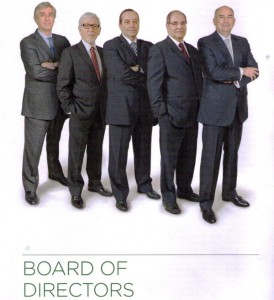
The meeting room on the 16th floor measures four metres by five and finished completely in wood. Thick walls provide for soundproofing, double glazing to keep out the street hubbub, thick carpeting, a dark red sofa and a table with four, antique style wooden chairs around it. On top of the table, there were some plastic bottles of water. Following a twenty-minute wait, the department head José Miguel Paredes silently entered through a second and separate door. He introduces himself. A tall and elegant man, well-dressed and approaching retirement age. The investor put forward his visiting card in keeping with protocol when one is from outside. One takes the card from the other. We sit down and enter into deep conversation. We regret the recession, the financial crisis and how good it all was a few years back when Secil AG, the second subsidiary of Semapa SGPS, still managed to shift 11 million tons of cement per year. However, all of this is historical. The current volume of sales stands in the region of 2.8 million tons. Hasn’t Portugal, and especially the Algarve, already been sufficiently “concreted over” yet? However, the journalist knows very well just what he is looking for and turns the conversation around to pulp and paper production at the Portucel/Soporcel subsidiary in Setúbal.
Would it be possible to visit one of the eucalyptus forests managed by Semapa SGPS or the nursery for the cloned saplings? – José Miguel Paredes is asked during the conversation. There would not really be much to visit there, he counters, with a friendly smile and continues: “You might as well drive through our country’s forests and you’ll find eucalyptus all over the place”. That’s right, the investor thinks, on Serra de Monchique over 76 per cent of forested land is planted with this plague. Serra de Monchique burned in 2003 and, last summer, it was the turn of Serra do Caramulo to be consumed by fire. The investor’s interest turns to the new cloned eucalyptus samples that Portucel/Soporcel is flooding the country with. In response, José Miguel Paredes gently asks just how much capital the investor might be interested in putting in and how. For whom did I work? The investor apologises for his own bad Portuguese and then casts out his line. The amount might be between ten and fifty million. Out of a question of prudence, no mention is made of any currency. However, such would be dependent to a large extent on other projects that might be recommended as economically viable. Would it be possible to undertake a visit of the wood, paper and pulp factory in Setúbal? We would, of course, be interested in knowing about just what we were investing our time and money in…
The creative destruction of our planet?
Two weeks later and a change of scenery. Every two minutes, a lorry stacked up with its load of eucalyptus wood swings into the large park. Right there, by the entrance to the paper factory, visitors and investors are told that whilst inside they would be filmed. “If they can, we can,” argues a colleague and smiles as he turns on his hidden camera (the short film resulting is available at www.eco123.info). Sofia Almeida, from the Department of Corporate Communication and Cidália Torre Abreu, the Director of Paper Quality Control, greet the supposed investor and his assistants at the gateway with its security system. They are all transported across the extensive lorry-park in a visitor minibus. Eucalyptus is being unloaded from a series of lorries awaiting in a queue, 25 of which arrive from Monchique on each and every working day. The investor learns that the wood is first ground up into pieces that are then chemically treated through a steaming process. Following this twelve to fifteen hour long operation, any incrustations or unwanted wooden components are separated out from the cellulose constituents. This process incorporates sodium, sulphite and sulphate which are then differentiated by usage of steaming chemicals. The residual lignin stains the paper pulp yellow and brown following the steaming process and thus requiring cleaning and bleaching. The residual lignin and any other unwanted substances are removed by this next stage with chemical bleaching serving to eliminate any discolouring. The entire process is highly toxic with chemical residues contaminating the water courses, the land and especially the air. The bleached white paper pulp (cellulose) is then transported directly in great thick tubes to the factory, where it’s subsequently drained and rolled out into paper rolls…
Business greenwashing in an Orwellian fashion?
From its control centre, the investor and his assistants are led off to the display room. Here, we find the product itself, pure white paper. The brands Navigator, Pioneer, Inacopia, Discovery, etcetera, are all major commercial successes. The prestigious labels EU-Eco and FSC appear splashed across the cover of each package. Greenwashing? Eucalyptus from Monchique getting exported out around the world? Thousands of metres of white paper rolls enter the factory at high speed for their final processing stage. Men in white lab coats move swiftly between A and B while others do not stir in front of monitors placed by a gigantic window as if in the control tower of some power station and monitoring the working of many machines and the labour of a few employees. We are given some ear mufflers and head out of the clinical laboratory and into the workshops of a modern factory. Cameras survey our each and every movement. A large scale photographic mural suggests a perfect world of an endless eucalyptus forest as the solution: “Build the future – Chase the dream – Make it reality“. The idea of having to work here, of having each movement recorded, surveyed and controlled recalls the philosophy of a group applying the Lenin thesis: “Trusting is good, but controlling is better.” Automated vehicles, controlled only by computers (and their respective software) and correspondingly driverless, follow one another around, transporting their roles of paper weighing in at three tons apiece. They criss-cross the factory workshops delivering their loads to robots. These swing their arms around like hoists, puppets against a brilliant orange background. They lift the roles off the cars and place them in the machines that adapt them to the standardised sizes: A4, A3 for the European market and other standards for their American and Asian counterparts. On another machine, the roles of paper get covered in a brown wrapping and readied for sending off to the printing presses…
Money makes the world go round?
The investors are driven through the kilometres and kilometres of clinically clean workshops of the Portucel paper factory in Setúbal. The head of quality control shows the potential investors with pride the way in which manufacturing takes place and affirms that broadly speaking production is done to order. That prevents the need for storage in warehouses, which incurs high costs and is not particularly economical. Last year, for the first time ever, they produced some 535,000 tons of paper, seven per cent more paper than the machinery and equipment were technically able to. “We worked 24 hours per day, 365 days per year, with five teams in total.” We always need to be ready to stand in for public holidays, sickness and other human failings. The demand for paper is enormous. Over the last four decades, world paper consumption has risen by some 400 per cent. Ever more people providing services, ever more computers, ever more hours spent working in offices and against ever more people working in the traditional trades. They proudly state how Portucel/Soporcel has taken the leadership of the European market and is the fifth largest paper producer worldwide.
Smell the money?
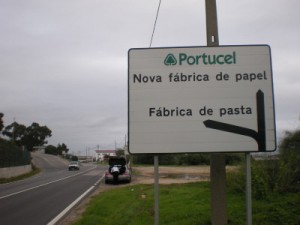 In the Mitrena industrial park, located by the sea in Setúbal, a city home to 120,000 inhabitants, the factory employs around 1,200 members of staff. In the Figueira da Foz paper factory and the Cacia cellulose plant, to the north of Aveiro, there are another 1,000 or so employees. Whatever the case, the inhabitants in these surrounding areas have to deal day after day with the stench of rotten egg emitted by the chimneys of these factories. It is due to gases containing sulphuric acid from the extraction of cellulose they clarify to the investor. “The human nose is especially sensitive to this,” highlights Cidália Torre Abreu as she shrugs her shoulders. The production of paper generates accumulations of nitrogen dioxide (NO2), sulphur dioxide (SO2) and carbon dioxide (CO2). Nitrogen dioxide and sulphur dioxide are the main causes of acid rain while CO2 represents the greenhouse gas responsible for climate change (for further information, please see our article on the IPCC, on page 72).
In the Mitrena industrial park, located by the sea in Setúbal, a city home to 120,000 inhabitants, the factory employs around 1,200 members of staff. In the Figueira da Foz paper factory and the Cacia cellulose plant, to the north of Aveiro, there are another 1,000 or so employees. Whatever the case, the inhabitants in these surrounding areas have to deal day after day with the stench of rotten egg emitted by the chimneys of these factories. It is due to gases containing sulphuric acid from the extraction of cellulose they clarify to the investor. “The human nose is especially sensitive to this,” highlights Cidália Torre Abreu as she shrugs her shoulders. The production of paper generates accumulations of nitrogen dioxide (NO2), sulphur dioxide (SO2) and carbon dioxide (CO2). Nitrogen dioxide and sulphur dioxide are the main causes of acid rain while CO2 represents the greenhouse gas responsible for climate change (for further information, please see our article on the IPCC, on page 72).
The investor question on whether Portucel perceives any business sense in the old and recycled paper sector, seems to draw a sense of unease. Yes, Portucel imports a small quantity of recycled paper pulp from France as the quality of national recycled paper is very low. Cidália Torre Abreu affirms her conviction that there wasn’t any money to be made from recycled paper. “The Portuguese factories take in old paper, mix it with water and clean it of impurities. However, the fibres produced in Portugal are of low quality. With them, the best we can expect is to be able to produce newspaper, toilet paper and tissue paper. However, our paper is high quality and white, not grey.” As regards the future and on making money with profit objectives rising by double digits annually, the investor is informed that Portucel SA (Semapa SGPS) is currently completing preparations to begin long term operations on 120,000 hectares of land in Africa, specifically in Mozambique. Hence, more natural forest is to be felled and converted into industrial eucalyptus plantations. On departure, the supposed investor receives the obligatory 2012 company annual management report and a box of eucalyptus flavoured sweets.
On the same day, the second team received an email from the Portucel corporate public relations department notifying of a refusal of their request to film in the paper factory.
Too big to fail?
Where normal journalism ends, investigative journalism begins, a true work of dedication. Journalists, playing the role of investors, still have some key questions they would like to raise personally with the president of the Semapa SGPS Board of Directors, a company listed on the national PSI 20 exchange. For an investment in the region of between 10 and 50 million, it would be preferable for both to talk with each other personally. The supposed investor thus decides to play his trump card and invites the president out to lunch. Will he accept? Through to the close of this edition, we have yet to gain any response whatsoever.
A group that seeks to fulfil a responsible role as a global player, and assuming responsibilities for thousands of jobs, should be able to respond in a critical and constructive manner to the question: for how much longer will it be allowed for a dozen, ageing and male directors (we would stress that there is not a single woman in this particular closet) to undertake trickery with credits running to the hundreds of millions of euros and with the majority falling due within the next five years? (Information according to www.finanzen.net and the Bank of Portugal).
Also economically questionable is just how a group built on cement is going to remain together when cement represents a product of yesterday, which has no further opportunities for growth either in Portugal or in Europe. Between 2002 and 2012, cement saw its sales fall by 25% in the Portuguese market and this, we would recall, before the worst of the recession hit.
Further deserving of question is just how the paper (cellulose) business is going to survive when its raw material, eucalyptus, in less than a generation, has destroyed ten per cent of the national territory through forest fires that have brought such great suffering to its inhabitants, industrialised a natural landscape and ruined traditional agriculture? Should the directors and board members not be held personally responsible for the way in which they manage the natural, financial and social resources of their group to the harm of broader society?
How would the investment of over a billion euros in the new paper factory in Setúbal (2009) produce a return, if in the next ten years the circular thinking and actions for a new change in paradigms prevail and white paper thereby experiences a fall in growth? Take a look at the case of cement and recycled paper. Inclusively, there is no guarantee as to the same need for paper in ten years time given the onset of the new information and communication technologies, the Internet, digital newspapers and e-readers, such as Amazon’s Kindle.
And finally, but no less importantly. Is there really no way to rethink the economy? How far are we going to head down the path of boundless growth on a planet with clearly acknowledged limited resources? We are no longer in an era of greed to earn ever larger amounts in which our days start with a little speculation on the stock market. The greenwashing of paper products, which were previously washed with a great deal more toxic chemicals, only functions for a set period of time and may come to an end at any moment as consumers discover this duplicity. The future of the economy really is only possible with true sustainability and assuming due responsibilities to society, the environment and future generations.
There is a great deal of work ahead, however, there are also a great deal of opportunities: a true challenge for Portugal and for its economy. To take but one example: the ecological recycling of used paper and the reutilisation of raw material has not yet become a new way of thinking. While in the north of Europe, 85 per cent of used paper gets recycled, in Portugal, that level is back on just 15 per cent. Thus far, society has accepted as normal that multinational corporations stick many of their costs onto nature, on to lesser developed countries (Mozambique, sic!) and onto the generations to come. Why don’t we establish a circular economy based on the laws of ecology? Why do we need chemically bleached eucalyptus paper when there is also recycled and ecological grey paper for offices, books and newspapers? (recycled paper)
Perhaps if a global company such as Semapa SGPS gained a genuine opportunity in the future to discuss the possibilities present – the consequences might include Portugal with ever fewer forest fires. However, this can only happen when, in each and every year, ever fewer eucalyptus trees get planted and then cut down and instead replaced by native species such as cork oaks, chestnuts, among many others.
Reportagem:
Investigação:
Imagens:
 Eco123 Revista da Economia e Ecologia
Eco123 Revista da Economia e Ecologia

